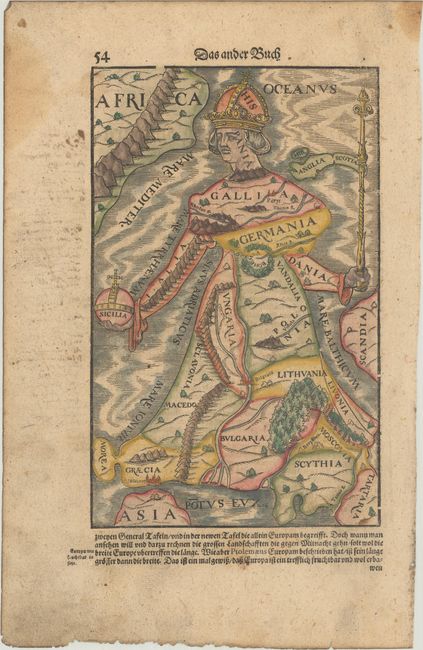Catalog Archive


Auction 186, Lot 403
Famous Cartographic Oddity of Europe in the Shape of a Woman
"[Europa Regina]", Munster, Sebastian

Subject: Europe
Period: 1628 (published)
Publication: Cosmographia, das Ist Beschreibung der Gantzen Welt
Color: Hand Color
Size:
6.4 x 10.2 inches
16.3 x 25.9 cm
Download High Resolution Image
(or just click on image to launch the Zoom viewer)
(or just click on image to launch the Zoom viewer)